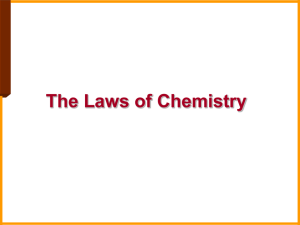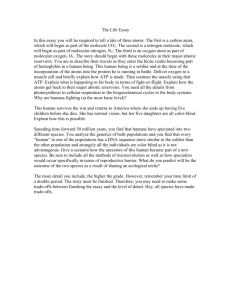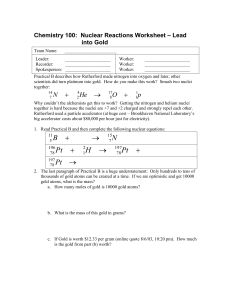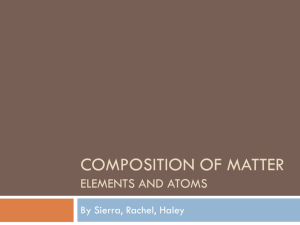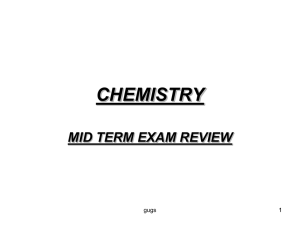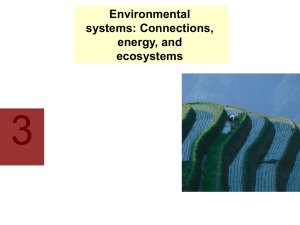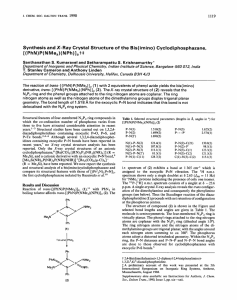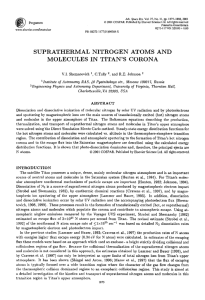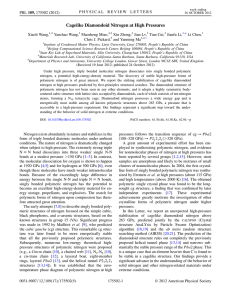Document
advertisement
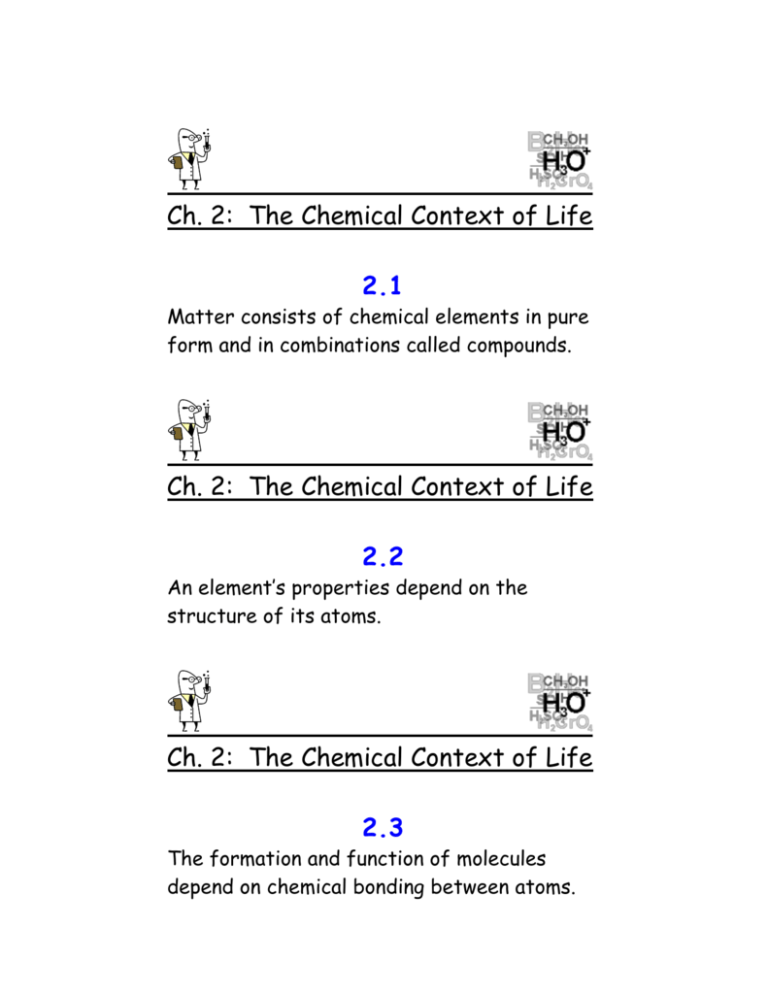
Ch. 2: The Chemical Context of Life 2.1 Matter consists of chemical elements in pure form and in combinations called compounds. Ch. 2: The Chemical Context of Life 2.2 An element’s properties depend on the structure of its atoms. Ch. 2: The Chemical Context of Life 2.3 The formation and function of molecules depend on chemical bonding between atoms. Ch. 2: The Chemical Context of Life 2.4 Chemical reactions make and break chemical bonds. Concept Check 2.1 (1) Explain why table salt is a compound, while the oxygen we breathe is not. What is the nitrogen we breathe? (2) What four chemical elements are most abundant in the food you ate yesterday? Which elements, when added to these four, bring the percentage of body elements to over 99? Concept Check 2.2 (1) A nitrogen atom has 7 protons, and the most common isotope of nitrogen has 7 neutrons. A radioactive isotope of nitrogen has 8 neutrons. What is the atomic number and mass number of this radioactive nitrogen? (2) Look at figure 2.8, and determine the atomic number of magnesium. How many protons and electrons does it have? How many electron shells? How many valance electrons are in the valance shell? Concept Check (1) 2.3 Why does the following structure fail to make sense? H–C=C–H (2) Explain what holds together the atoms in a crystal of magnesium chloride (MgCl2). What holds the atoms of a water molecule together? Concept Check 2.4 (1) Refer to the balanced chemical equation found on the bottom left-hand side of page 44. How are the atoms bonded together? Do you think energy goes into the arrow or out from the arrow? (2) Which occurs faster at equilibrium, the formation of products from reactants, or reactants from products?


